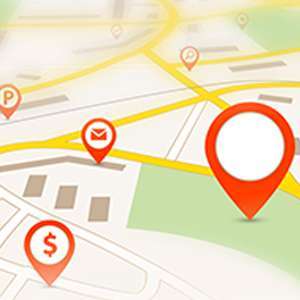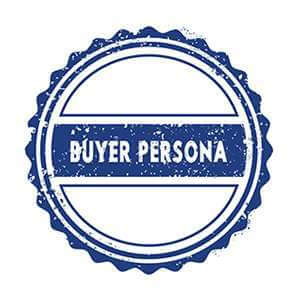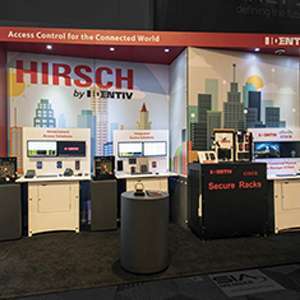
5 Factors That Could Impact Your Trade Show Planning
Trade shows cost exhibitors for sure and sales executives face a daunting task of making every dollar spent on the trade show participation count. The risk in trade show participation stems from the fact that it is a sponsored activity and at the day if there is no visible impact on the top line and corporate earnings, questions arise and heads roll.
It does not have to be this way though and salespersons can always negate risks to the minimum by being proactive in investing time, effort and resources in trade show planning.
Given that there are pre-determined selling and non-selling objectives to achieve, what is the best way to plan for trade shows?
Is there an all exhaustive checklist which salespersons can make use of, to plan for a trade show event?
It is prudent to stick to a subsistence level checklist of five factors that salespersons should incorporate into their trade show planning to create business development opportunities and make sense of the outlay incurred on participating in a trade show.
 Layout of the Trade Show Venue
Layout of the Trade Show Venue
Before participating in the trade show, gather information on the trade show venue meticulously. Remember that a trade show is a marketplace and the lack of information on the geographical landscape can impact the footfall of visitors, the exposure of the brand and the quality of lead generation.
What particulars of the trade show venue should be figured into the planning process?
First, take note of the city and the logistical routes and corresponding costs of transport. If you have heavy merchandise or inventory to carry, how do you propose to mobilize them to the venue?
Ask for a map of the layout inside the venue. Explore the total floor area being covered by the exhibition, the adjacent areas and the schedule of events. Visualize the inflow and outflow of traffic across the space of the layout with the timelines.
Choose a space for your trade show booth to optimize the footfall of traffic keeping in mind the selling and non-selling objectives that your brand aims to achieve from the trade show.
Neighbors at the Trade Show Venue
The first comparison begins with your neighbor. In marketing, the demonstration effect of “keeping up with the Joneses” plays out on the psyche of the visitors at the trade show. Not keeping with the Joneses means that your brand is sequestered from the rest of the industry vertical.
Know your neighbor before the trade show event registration. Seek information on the other brands from the vertical that are in talks with the trade show organizers and are willing to participate and those, that have ensured participation in the event.
Map the exhibitor brands according to the market segments that they target and their respective trade show booth locations at the event premises. Do not shy away from being the next door neighbor to the competing brands in the same segment.
An assembly of trade show booths of brands belonging to the same segment or delivering similar value propositions is not a disadvantage. Rather being close to competitors at the trade show venue shall help in attracting the traffic of visitors to the booths of all the competing exhibitor brands.
Analysis of Buyer Persona
A trade show is about people. It is about connecting brands to people. Remember that the very purpose of participating in the trade show is to reach out to people. Not being in the know-how of the people means that your brand does not know whom to sell.
Analyses the buyer persona next. Who are the people that the booth staffers would like to meet or are likely to meet you?
What is the target audience profile that your brand seeks to explore at the trade show for sales conversions?
Brainstorm on the demographic, cultural, social, economic and psychographic parameters and then visualize the matrix of your audience. If operating in the B2B marketing context, think of their position in the corporate organizational pyramid or their roles as wholesalers and retailers. If operating in the B2C context, think of the end user and the trade intermediaries in the value chain that you aim to meet at the trade show event.
Mapping the buyer persona shall pave the way for choosing the inventory of products for display, the choice of the exhibit booth rentals, the choice of marketing communication modes to be deployed including immersive technologies if required and trade show booth design ideas.
Booth Design & Exhibits Inside the Booth
Of all the different modes of information relaying that brands use, visual sensory experiences are the most remembered ones. As marketers say, out of sight is out of mind.
Now it is time to get creative and combine the best of aesthetic senses and commercial value. Think through the brand value proposition, the unique selling point of the brand and the brand positioning strategy that is deployed across the marketplace, in advertisements and the sales and trade promotion tools.
Synchronize these aspects to create a brand messaging strategy. Share the brand messaging strategy with the trade show booth building company to explore original and unique trade show booth design that accurately mirror the brand deliverables.
Ask for 3D visualizations and thematic graphical representations of the trade show booth design, the exhibit booth rentals, and furniture to be kept inside the booth and a visual interface that is different from those of your immediate neighbors. Differentiate the brand messaging through the design aspects and explore the opportunity to create brand equity.
Formulation of the Trade Show Budget
What are the numbers? A trade show costs money, time, efforts and resources. A trade show budget is about making sense of the outlay on the event. Remember, at the end of the day, your participation shall be judged on how the numbers for costs and sales stack up.
In the final step of the trade show planning process, involve personnel from the quality, marketing and finance departments. Seek inputs from the quality personnel on identifying wastages in the blueprint that you have thought of.
Identify expense overheads to the particulars and the objectives that they serve. Deploy a fish-bone diagram to link costs to objectives and simplify the identification of wastages. Next involve personnel from the marketing team to seek inputs on the sanctity of the brand messaging after the elimination of the wastes.
Does it alter the brand messaging?
Revisit the 3D visualization now and edit it to eliminate the wastes. Now ask the marketing team if it dilutes the brand messaging in any way. Finally, seek inputs from the finance department to match available funds to the total costs.
Look for unorthodox avenues to save costs like mode of transport, stay at the hotel for the trade show booth staffers and the allowances for sponsored corporate lunch and dinner to control costs without compromising on the objectives.
Planning for a trade show should commence at the commencement of the new financial year, involve personnel from multiple departments and gain momentum as the countdown to the event registration begins. The more than an exhibitor plans, the better are the sales conversions.



